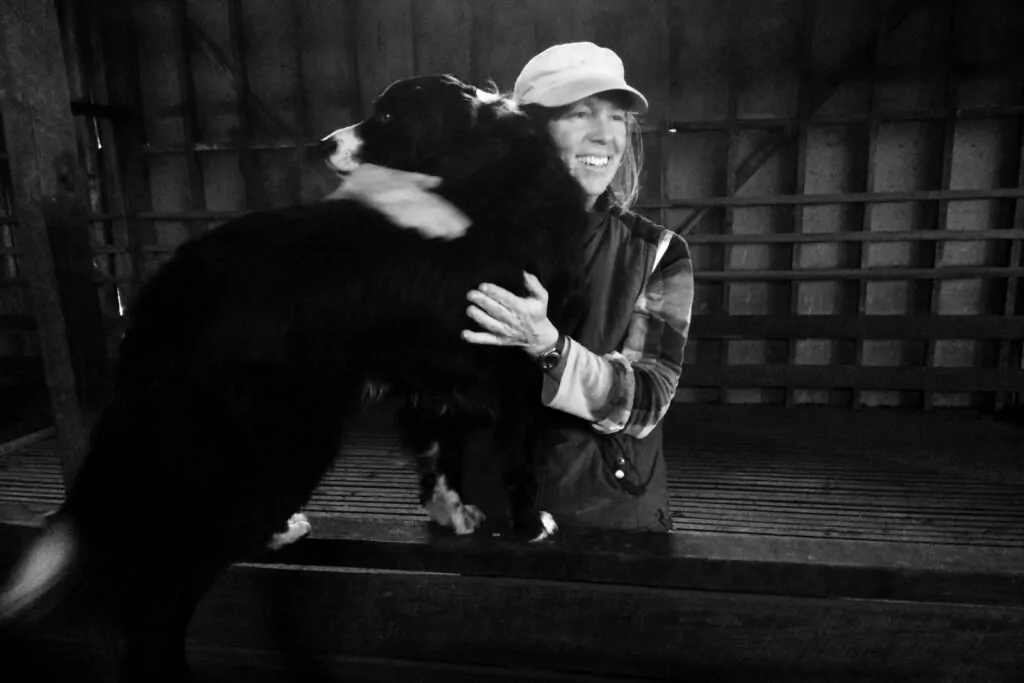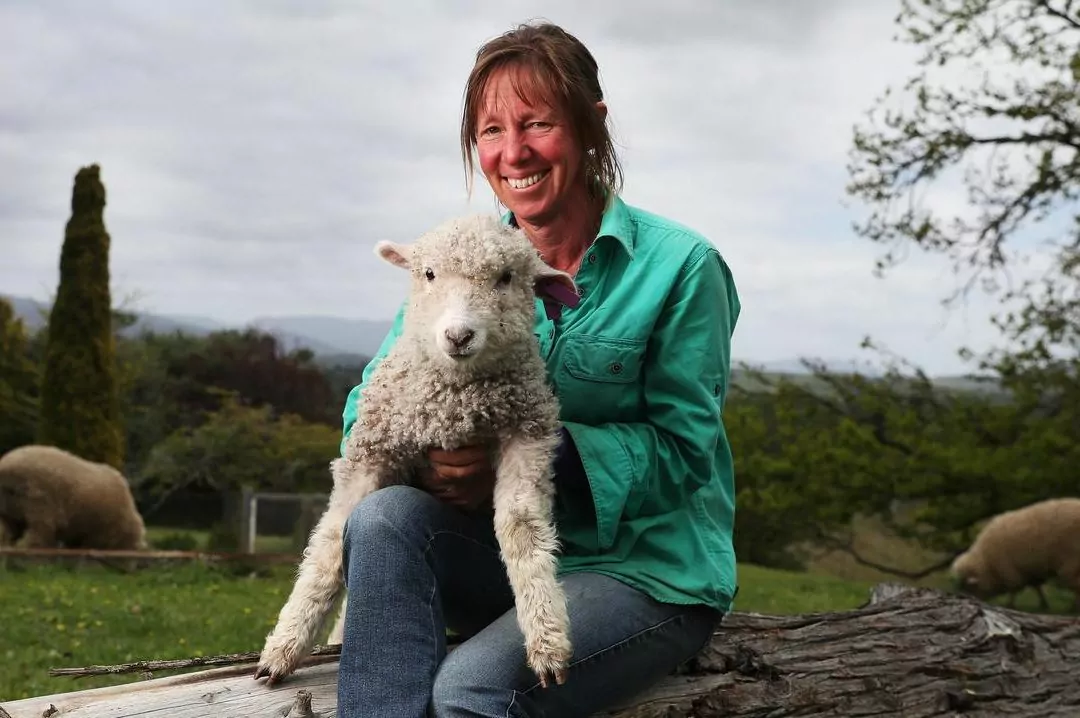The Farmers

In addition to running the farm, Fiona has 27 years experience working as a zoologist/ ecologist, including stints in Antarctica and Macquarie Island studying seabirds. She has also studied seals and Tasmanian devils and has worked for 16 years as a Discovery/Education Ranger with the Parks and Wildlife Service. She is currently completing a Graduate Diploma of Ornithology and conducts seasonal field surveys of threatened bird species such as the swift parrot.
In 1989, Fiona instigated a program of tree planting to provide shelter for stock but also to provide habitat for birds and other native wildlife. Since then, thousands of trees have been planted to facilitate biodiversity and to help global climate.
Both the white bellied sea eagle and wedge tailed eagle occasionally nest at Arundel. Swift parrots are sometimes seen on the farm, feeding on blue gum flower in their shelterbelts. Many endemic Tasmanian bird species can be found here including the dusky robin, the yellow wattle bird, the green rosella, the yellow throated honey eater, the black headed honeyeater and the Tasmanian native hen. Several threatened mammal species occur at Arundel, including the Tasmanian devil, the eastern and spotted tailed quolls and the eastern-barred bandicoot.
The Farm
Fiona Hume’s family has been farming at Arundel since 1894. Currently they run merino/cormo sheep for wool, English Leicester/merino sheep for fat lamb production and a small flock of English Leicester for meat, wool and sheepskins. Fiona has begun selling meat to local restaurants, including the Agrarian Kitchen Eatery and their product was also used as part of the 2017 Dark Mofo winter feast.
The English Leicester is a heritage breed of sheep, bred in the 1860’s in the United Kingdom. They are a rare breed with very few remaining in the UK and with the largest flock in Australia occurring in the Derwent Valley of Tasmania. Fiona Hume runs her flock of 200 ewes on the family farm Arundel, producing approximately 100 sheep for consumption per year. Unlike modern sheep breeds which can be ready for consumption in 3-4 months, their English Leicesters take longer to grow and mature and are ready for consumption from 8 months. At around 9 months of age a lamb is known as a ‘hogget’ and then from 12-15 months they become a ‘two tooth’. This classification is based on the eruption of permanent incisor teeth. Mutton describes sheep over three years of age, however once the permanent incisors erupt the market-place generally classifies the sheep as mutton. Most farmers would say that a hogget or a two tooth is far more flavoursome than a lamb. In fact, many farmers would say that mutton is better than anything! Their Arundel English Leicesters are available for market as lambs in Autumn, Winter and into Spring.Two-tooth sheep and mutton are also available at any time of year.
Their English Leicesters graze beside the Derwent River, feeding on clover and introduced and native grasses. In summer, when feed is less abundant, their diet is supplemented with lupin, molasses and mineral blocks, and in winter, before the Spring pastures grow, they are fed pellets (containing cereal grains, vitamins and minerals) as well as lick blocks and oaten hay. The English Leicester is said to be ‘what sheep used to taste like’. Their flavour is full and rich and their adequate fat content adds a distinct and traditional flavour. English Leicester is delicious when cooked slow, especially when roasted on a spit Argentinian style (asado criollo). All animals on their farm are treated ethically, with dignity and respect. All stock at Arundel are checked regularly to ensure their wellbeing and all their meat is hormone and antibiotic free.
